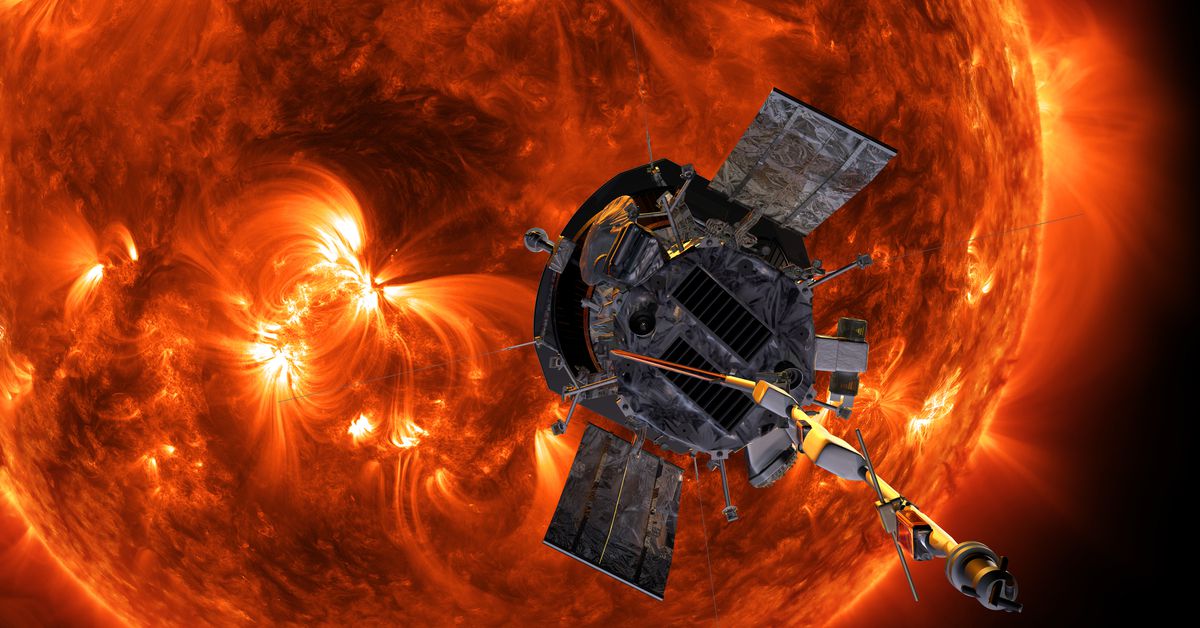On December 26th, NASA received a signal from its Parker Solar Probe, indicating that it has survived an unprecedented close encounter with the Sun. The probe, which was launched on August 12, 2018, by NASA and Johns Hopkins Applied Physics Laboratory, flew just 3.8 million miles from the surface of the Sun on December 24th.
A Record-Breaking Achievement
The Parker Solar Probe’s historic flyby marks the closest any human-made object has ever come to the Sun. This achievement is a testament to the ingenuity and determination of NASA’s engineers and scientists, who have designed and built a spacecraft capable of withstanding the intense heat and radiation emanating from the Sun.
A Mission of Great Significance
The Parker Solar Probe was sent on its mission to study the corona, the outer atmosphere of the Sun. The corona is incredibly hot, reaching temperatures of millions of degrees Celsius, while the surface of the Sun itself is a relatively cool 5,500°C. Scientists have long been puzzled by this phenomenon, and the Parker Solar Probe is designed to help answer some of these questions.
The Probe’s Design and Capabilities
The Parker Solar Probe is equipped with an advanced heat shield that protects it from the intense radiation emanating from the Sun. This shield reaches temperatures of around 2,500°F (1,370°C), while the probe itself remains a relatively cool 85°F (30°C). The probe’s design allows it to withstand the extreme conditions near the Sun and gather valuable data on the corona.
The Close Flyby: A Critical Moment in the Mission
On December 24th, the Parker Solar Probe flew within 3.8 million miles of the surface of the Sun at a speed of approximately 430,000 miles per hour (692,000 km/h). During this time, mission operations were out of contact with the probe, and NASA received its first signal from the spacecraft on December 26th.
Initial Assessment: The Probe is in Good Health
According to NASA, the initial assessment indicates that the Parker Solar Probe is operating normally and has transmitted a signal back to Earth. This is a critical milestone in the mission, as it confirms that the probe has survived its close encounter with the Sun.
Upcoming Data Transmission
NASA expects the Parker Solar Probe to transmit detailed telemetry data on its status on January 1st. This will provide scientists with valuable insights into the probe’s performance and help them plan for future flybys.
The Importance of Studying the Corona
Studying the corona is crucial for understanding various solar phenomena, including:
- Solar Wind: The coronal heating that accelerates charged particles to near light speed.
- Sun’s Heat: Understanding the mechanisms behind the Sun’s immense heat output.
- Energetic Particles: Investigating how these particles are accelerated to nearly light-speed velocities.
A New Era in Space Exploration
The Parker Solar Probe’s historic flyby marks a new era in space exploration. This achievement demonstrates humanity’s ability to design and build spacecraft capable of withstanding the extreme conditions found near celestial bodies like the Sun.
Conclusion
NASA’s Parker Solar Probe has successfully completed its closest approach to the Sun, marking a significant milestone in space exploration. The probe’s survival and continued operation will provide scientists with valuable insights into the corona and help answer long-standing questions about solar phenomena.
References
- NASA. (2021). Parker Solar Probe. Retrieved from https://solarsystem.nasa.gov/parker-solar-probe/in-depth/
- Johns Hopkins Applied Physics Laboratory. (2018). Parker Solar Probe. Retrieved from https://www.jhuapl.edu/our-work/space-exploration/projects/parker-solar-probe
- NASA. (2021). Parker Solar Probe: Closest Approach to the Sun. Retrieved from https://solarsystem.nasa.gov/news/11363/nasas-parker-solar-probe-closes-in-on-the-sun/









